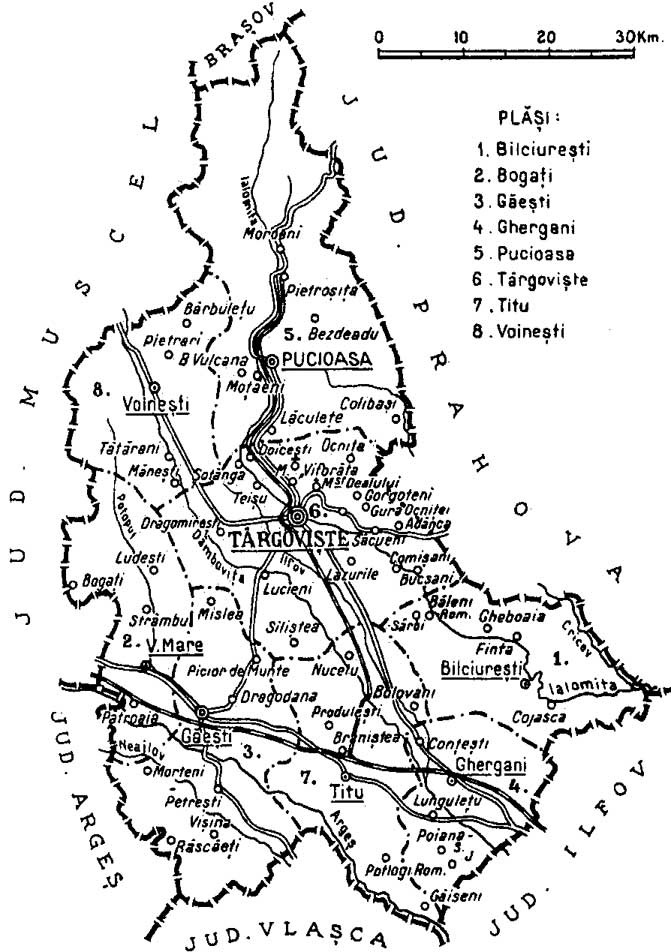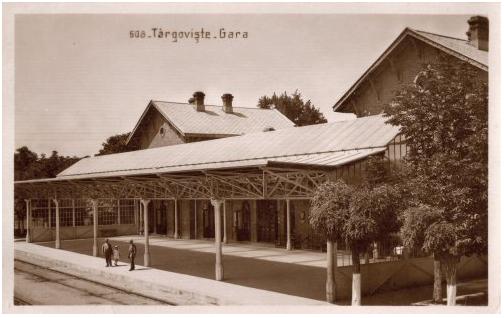|
Cândești, Dâmbovița
Cândești is a commune in Dâmbovița County, Muntenia, Romania. It is composed of five villages: Aninoșani, Cândești-Deal, Cândești-Vale (the commune center), Dragodănești, and Valea Mare. The commune is located in the northwestern part of the county, away from the county seat, Târgoviște, on the border with Argeș County. It lies on the right bank of the Dâmbovița River Dâmbovița can refer to these places in Romania: * Dâmbovița County Dâmbovița County (; also spelt Dîmbovița) is a county () of Romania, in Muntenia, with the capital city at Târgoviște, the most important economic, political, administ .... Its neighbors are Voinești commune to the north and to the east, Tătărani commune to the south, and Boțești, Argeș commune to the west. References Communes in Dâmbovița County Localities in Muntenia {{Dâmboviţa-geo-stub ... [...More Info...] [...Related Items...] OR: [Wikipedia] [Google] [Baidu] |
Communes Of Romania
A commune (''comună'' in Romanian language, Romanian) is the lowest level of administrative subdivision in Romania. There are 2,686 communes in Romania. The commune is the rural subdivision of a Counties of Romania, county. Urban areas, such as towns and cities within a county, are given the status of ''Cities in Romania, city'' or ''Municipality in Romania, municipality''. In principle, a commune can contain any size population, but in practice, when a commune becomes relatively urbanised and exceeds approximately 10,000 residents, it is usually granted city status. Although cities are on the same administrative level as communes, their local governments are structured in a way that gives them more power. Some urban or semi-urban areas of fewer than 10,000 inhabitants have also been given city status. Each commune is administered by a mayor (''primar'' in Romanian). A commune is made up of one or more villages which do not themselves have an administrative function. Communes ... [...More Info...] [...Related Items...] OR: [Wikipedia] [Google] [Baidu] |
Dâmbovița County
Dâmbovița County (; also spelt Dîmbovița) is a county () of Romania, in Muntenia, with the capital city at Târgoviște, the most important economic, political, administrative and cultural center of the county. It is a traditional administrative unit, first attested in 1512. Demographics In 2021, it had a population of 479,404 and the population density was 120/km2. It is one of the most densely populated counties in Romania. * Romanians – 87.09% * Roma - 3.96% * Bulgarians - 0.31% * Serbians 0.1% * Others - 0.13% * Unknown - 8.41% Name The county is named after the Dâmbovița River, which is a name of Slavic origin, derived from ''Дъб, dâmb'', meaning "oak", as it once flowed through the oak forests of the Wallachian Plain. Geography Dâmbovița county has a total area of 4,054 km2 (1.7% of the country's surface). It is situated in the south-central part of the country, on the Ialomița and Dâmbovița river basins. The highest altitude is Omu Pe ... [...More Info...] [...Related Items...] OR: [Wikipedia] [Google] [Baidu] |
Muntenia
Muntenia (, also known in English as Greater Wallachia) is a historical region of Romania, part of Wallachia (also, sometimes considered Wallachia proper, as ''Muntenia'', ''Țara Românească'', and the rarely used ''Valahia'' are synonyms in Romanian). It is situated between the Danube (south and east), the Carpathian Mountains (the Transylvanian Alps branch) and Moldavia (both north), and the Olt River to the west. The latter river is the border between Muntenia and Oltenia (or ''Lesser Wallachia''). Part of the traditional border between Wallachia/Muntenia and Moldavia was formed by the rivers Milcov and Siret. Geography Muntenia includes București - Ilfov, Sud - Muntenia, and part of the Sud-Est development regions. It consists of nine counties entirely: * Brăila * Buzău * Călărași * Argeș * Dâmbovița * Giurgiu * Ialomița * Ilfov * Prahova And parts of four others: * Teleorman (the entire county with the exception of Islaz) * Vrancea (southern p ... [...More Info...] [...Related Items...] OR: [Wikipedia] [Google] [Baidu] |
Romania
Romania is a country located at the crossroads of Central Europe, Central, Eastern Europe, Eastern and Southeast Europe. It borders Ukraine to the north and east, Hungary to the west, Serbia to the southwest, Bulgaria to the south, Moldova to the east, and the Black Sea to the southeast. It has a mainly continental climate, and an area of with a population of 19 million people. Romania is the List of European countries by area, twelfth-largest country in Europe and the List of European Union member states by population, sixth-most populous member state of the European Union. Europe's second-longest river, the Danube, empties into the Danube Delta in the southeast of the country. The Carpathian Mountains cross Romania from the north to the southwest and include Moldoveanu Peak, at an altitude of . Bucharest is the country's Bucharest metropolitan area, largest urban area and Economy of Romania, financial centre. Other major urban centers, urban areas include Cluj-Napoca, Timiș ... [...More Info...] [...Related Items...] OR: [Wikipedia] [Google] [Baidu] |
Târgoviște
Târgoviște (, alternatively spelled ''Tîrgoviște'') is a Municipiu, city and county seat in Dâmbovița County, Romania. It is situated north-west of Bucharest, on the right bank of the Ialomița (river), Ialomița River. Târgoviște was one of the most important cities in the history of Wallachia, as it was its capital from 1418 to 1659. At the 2021 Romanian census, 2021 census, the city had a population of 66,965 people, making it the 27th largest in the country. Etymology The name ''Târgoviște'' is a Slavic name which the city acquired in the Middle Ages. It is derived from the old Slavonic word for "marketplace", referring to the place rather than the market itself. The name is found in placenames not only in South Slavic areas (Bulgarian , Serbian and Croatian '), but also in West Slavic such as Slovak ''Trhovište'', Czech ''Trhoviště'' or Polish ''Targowica, Lower Silesian Voivodeship, Targowica''. Additionally, places with the same name are found in Romania, ... [...More Info...] [...Related Items...] OR: [Wikipedia] [Google] [Baidu] |
Argeș County
Argeș County () is a county (''județ'') of Romania, in Muntenia, with the county seat at Pitești. Demographics At the 2021 Romanian census, 2021 census, the county had a population of 569,932 and the population density was . At the 2011 Romanian census, 2011 census, it had a population of 612,431 and the population density was . * Romanians – 97% * Romani people in Romania, Roma (Gypsies) and Minorities of Romania, other ethnic groups – 3% Geography This county has a total area of . The landforms can be split into 3 distinctive parts. In the north side there are the mountains, from the Southern Carpathians group – the Făgăraș Mountains with Moldoveanu Peak (2,544 m), Negoiu Peak (2,535 m) and Vânătoarea lui Buteanu peak (2,508 m) towering the region, and in the North-East part the Leaotă Mountains. Between them there is a pass towards Brașov, the Rucăr–Bran Pass. The heights decrease, and in the center there are the sub-carpathian hills, with heights aro ... [...More Info...] [...Related Items...] OR: [Wikipedia] [Google] [Baidu] |
Dâmbovița (river)
The Dâmbovița () is a river in Romania. It has its sources on the Curmătura Oticului, a mountain pass that separates the Iezer Mountains from the Făgăraș Mountains proper. It passes through Bucharest and flows into the river Argeș near Budești, in Călărași County. Its length is and its basin size is . Dâmbovița County is named after the river. Name The name of the Dâmbovița is of Slavic origin, derived from Common Slavic '' dǫbŭ'' (дѫбъ), meaning "oak", as it once flowed through the oak forests of the Wallachian Plain. Its upper course, upstream from the Valea Vladului, is also called ''Valea Boarcășului''. Dâmbovița in Bucharest For centuries, Dâmbovița was the main source of drinking water for the city of Bucharest. While there were a few dozen water wells, most of the water in Bucharest was distributed by water-carriers.Ștefan Ionescu, ''Bucureștii în vremea fanarioților'', Editura Dacia, Cluj, 1974. p. 28-30 Bucharest folklore mentio ... [...More Info...] [...Related Items...] OR: [Wikipedia] [Google] [Baidu] |
Voinești, Dâmbovița
Voinești is a Commune in Romania, commune in Dâmbovița County, Muntenia, Romania with a population of 5,911 as of 2021. It is composed of eight villages: Gemenea-Brătulești, Izvoarele, Lunca, Manga, Mânjina, Oncești, Suduleni, and Voinești. At Voinești, there is a powerful mediumwave broadcasting station with 2 masts, working on 630 kHz. Natives * Cătălin Grigore (born 1977), footballer * Gheorghe Pîrvan (born 1976), rower References Communes in Dâmbovița County Localities in Muntenia {{Dâmboviţa-geo-stub ... [...More Info...] [...Related Items...] OR: [Wikipedia] [Google] [Baidu] |
Tătărani
Tătărani is a commune in Dâmbovița County, Muntenia, Romania with a population of 5,228 people as of 2021. It is composed of four villages: Căprioru, Gheboieni, Priboiu, and Tătărani. The commune is situated in a hilly area between the Wallachian Plain and the Southern Carpathians. It lies on the banks of the Dâmbovița River; the river Aninoasa discharges into the Dâmbovița in Căprioru village. Tătărani is located in the northwestern part of Dâmbovița County, from the county seat, Târgoviște, on the border with Argeș County. It is traversed on the left bank of the Dâmbovița River by national road , which connects Târgoviște to Câmpulung Câmpulung (also spelled ''Cîmpulung'', , , Old Romanian ''Dlăgopole'', ''Длъгополе'' (from Middle Bulgarian), or ''Câmpulung Muscel'') is a municipiu, city in Argeș County, Muntenia, Romania. It is attested on the Fra Mauro map fro .... References Communes in Dâmbovița County Localities in Mun ... [...More Info...] [...Related Items...] OR: [Wikipedia] [Google] [Baidu] |
Boțești, Argeș
Boțești is a commune in Argeș County, Muntenia, Romania. It is composed of two villages: Boțești and Moșteni-Greci. The commune is right on the 45th parallel north, northeast of Pitești and northwest of Bucharest. Natives * Ion Diaconescu Ion Diaconescu (; 25 August 1917 – 11 October 2011) was a Romanian anti-communist activist and politician. He was imprisoned as a political prisoner for seventeen years from 1947 to 1964 during Romania's Communist era. Diaconescu later becam ... (1917–2011), anti-communist activist and politician References Communes in Argeș County Localities in Muntenia {{Argeş-geo-stub ... [...More Info...] [...Related Items...] OR: [Wikipedia] [Google] [Baidu] |
Communes In Dâmbovița County
A commune is an alternative term for an intentional community. Commune or comună or comune or other derivations may also refer to: Administrative-territorial entities * Commune (administrative division), a municipality or township ** Communes of Algeria ** Communes of Angola ** Communes of Belgium ** Communes of Benin ** Communes of Burundi ** Communes of Chile ** Communes of the Democratic Republic of the Congo ** Communes of France ** Communes of Italy, called ''comune'' ** Communes of Luxembourg ** Communes of Moldova, called ''comună'' ** Communes of Niger ** Communes of Romania, called ''comună'' ** Communes of Switzerland ** Commune-level subdivisions (Vietnam) *** Commune (Vietnam) *** Commune-level town (Vietnam) ** People's commune, highest of three administrative levels in rural China, 1958 to 1983 Government and military/defense * Agricultural commune, intentional community based on agricultural labor * Commune (rebellion), a synonym for uprising or revolutiona ... [...More Info...] [...Related Items...] OR: [Wikipedia] [Google] [Baidu] |


